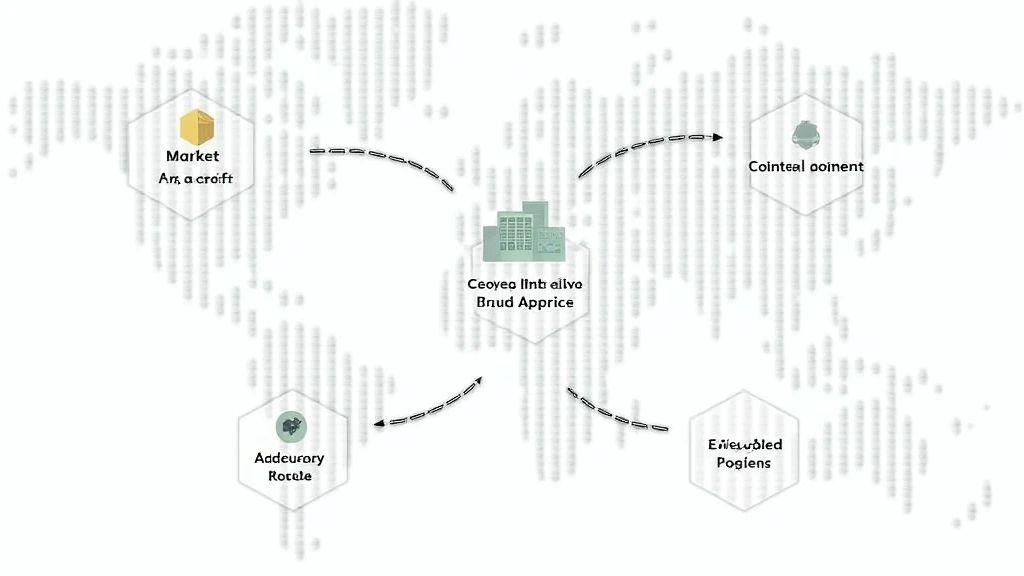Understanding Bitcoin Blockchain Hard Forks: Navigating the Future of Cryptocurrency
In the ever-evolving landscape of cryptocurrency, Bitcoin (BTC) remains the focal point of innovation and discussion. As of 2023, the market capitalization of Bitcoin surpasses $900 billion, making it a crucial element in the financial ecosystem. However, this massive growth comes with complexities such as hard forks, which have significant implications for investors, developers, and the industry at large. With over $4.1 billion lost to DeFi hacks in 2024, understanding Bitcoin blockchain hard forks is vital for securing digital assets.
The Basics of Bitcoin Blockchain and Hard Forks
Before diving into hard forks, it is essential to grasp the fundamentals of the Bitcoin blockchain. The Bitcoin blockchain is a decentralized digital ledger that records transactions across many computers, ensuring that the data is secure and immutable. A hard fork occurs when there is a divergence in the blockchain, typically due to disagreements among developers or community members about protocol changes.
There are two main types of forks: soft forks and hard forks. A soft fork is a backward-compatible change, while a hard fork is not. When a hard fork happens, it leads to the creation of a new version of the cryptocurrency, which can result in new tokens being created, such as Bitcoin Cash (BCH) and Bitcoin SV (BSV).

The Importance of Hard Forks in Bitcoin’s Evolution
Hard forks play a vital role in the evolution of Bitcoin. They are often implemented to enhance features, address security vulnerabilities, or cater to the needs of a growing community. However, they can also lead to division within the community and can impact the price and usability of the cryptocurrencies involved.
- Feature Enhancements: Hard forks can introduce new functionalities, improving user experience.
- Security Improvements: Upgrades often address vulnerabilities, enhancing the overall integrity of the blockchain.
- Community Division: Disagreements on how to progress can split the community, leading to the emergence of competing coins.
How Bitcoin Hard Forks Affect Investors
For investors, understanding the mechanics of Bitcoin hard forks is crucial. When a hard fork is announced, stakeholders must consider the potential ramifications on their holdings. This includes the possibility of receiving new coins, but also the risk of value dilution.
Receiving New Tokens: Advantages and Risks
When a hard fork occurs, holders of the original Bitcoin may receive an equivalent amount of the new cryptocurrency at the time of the fork. For example, those who held Bitcoin before the Bitcoin Cash hard fork received an equal amount of BCH after the split. However, there are certain risks involved, such as:
- Market Volatility: New tokens can initially experience significant price fluctuations, leading to potential losses.
- Security Concerns: In the aftermath of a hard fork, there may be heightened risks of hacks or other vulnerabilities.
- Dilutive Effects: An influx of new tokens may dilute overall market confidence and value.
The Future of Bitcoin and Hard Forks in 2025 and Beyond
As Bitcoin continues to mature, the landscape of hard forks is expected to evolve. Analysts predict that by 2025, we will see more structured approaches to future forks, which will potentially stabilize the market. A report from Chainalysis indicates that user growth rates in emerging markets, like Vietnam, have surged by 30%, leading to heightened importance placed on security standards in blockchain technology, such as tiêu chuẩn an ninh blockchain.
Looking at the Potential for Future Forks
The Bitcoin ecosystem is poised for continual growth and adaptation. In this context, future hard forks might not only arise from technical disagreements but also from the need to cater to a global audience. The integration of blockchain into daily financial transactions presents a landscape rich with opportunity and risk.
Real-Life Examples of Bitcoin Hard Forks
To better understand the impact of hard forks, we can look at notable examples that have shaped the Bitcoin community:
- Bitcoin Cash (BCH): Launched in August 2017, BCH aimed to improve transaction speed and lower fees, leading to a significant split in the community.
- Bitcoin SV (BSV): Emerging from a disagreement regarding the direction of BCH, BSV focuses on larger block sizes to enhance scalability.
- Bitcoin Gold (BTG): Introduced in October 2017, BTG aimed to make mining accessible to more individuals by changing the algorithm from ASIC to GPU, allowing a broader user base.
Conclusion: Navigating the Bitcoin Hard Fork Landscape
Bitcoin blockchain hard forks are significant events that can influence the life of investors and the cryptocurrency market at large. As we move further into 2025, it is imperative for participants in the cryptocurrency sector to remain informed about the potential impacts and mechanisms of hard forks. By understanding these dynamics, investors can make more educated decisions and navigate the complexities of the digital asset landscape.
As the market continues evolving, staying aware of trends and changes—such as those influenced by new regulations and emerging technologies—will remain crucial. Learn more about how to protect your digital assets and stay ahead of developments in blockchain security measures.
Disclaimer: Not financial advice. Consult local regulators.
Written by: Dr. John Smith, Blockchain Security Analyst, with over 15 published papers in the field, and having led audits for major blockchain projects.





